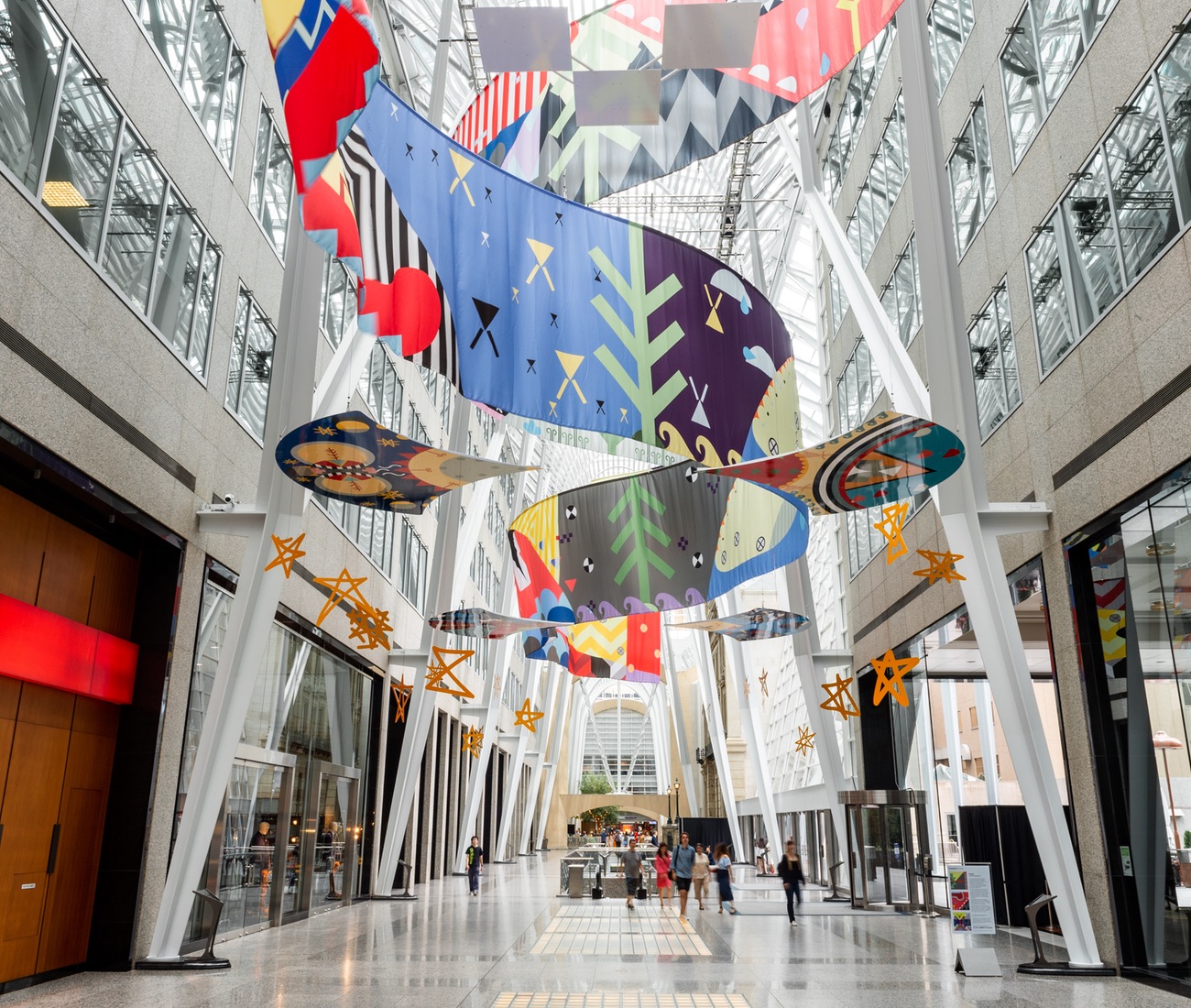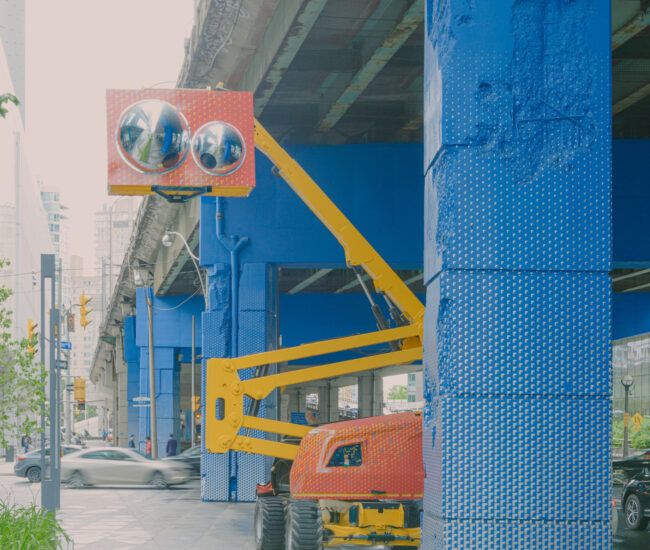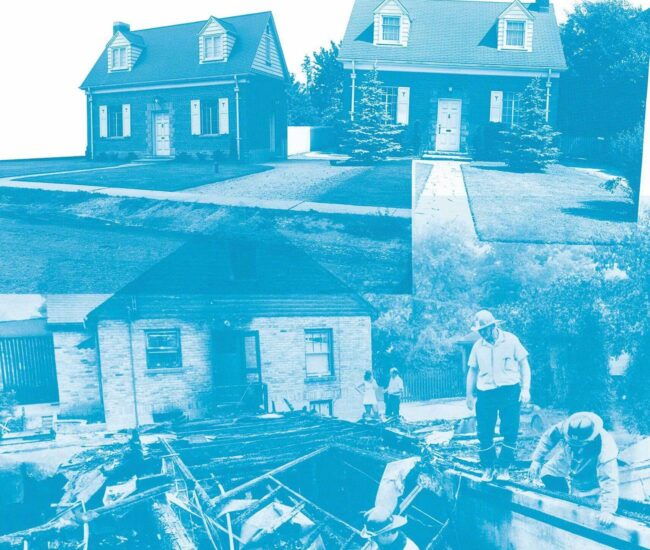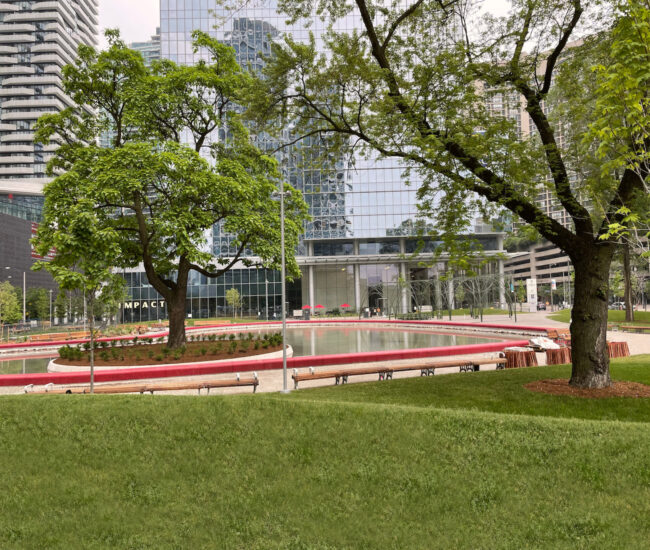This Installation Tells Mi’kmaq Creation Stories High Above Brookfield Place

Artist Jordan Bennett’s 100-foot installation, Tepkik, soars above the Lambert Galleria – and shares the ancient creation stories of the Mi’kmaq using contemporary materials.
The galaxy is an escalator ride away from Jimmy the Greek. That’s because, until August 24, a towering installation by artist Jordan Bennett is rising above Brookfield Place, a Bay-Wellington landmark where office workers congregate for a lunchtime spanakopita. Those in the area have likely already noticed it: cascading dramatically from the ceiling of the Lambert Galleria, Tepkik is a 100-foot-long fabric installation that stitches together bold graphic elements and eye-catching pops of colour. But peer in closer, and Tepkik has stories to tell.

Though Bennett used unabashedly contemporary materials to create Tepkik, the installation explores something decidedly more ancient – namely, the creation stories of the Mi’kmaq, the First Nations people indigenous to Atlantic Canada. Inspired by petroglyphs found at Kejimkujik, a national park on Nova Scotia’s south shore, Tepkik is Bennett’s interpretation of the park’s stone-carved stories. “As a Mi’kmaq person I’ve been seeing the designs from Kejimkujik my whole life in text books, historical documents and through fellow Mi’kmaq artists work, its only recently that I got to visit the site in person with family,” says Bennett.
“When I was asked to create a work for Brookfield Place I started to think about the scale of the piece that I’d have to create to hold the space. My mind instantly went to the drawings that can be found on the shores of Kejimkujik National Park that depict various experiences, stories, people, animals, objects, points in time, encounters and events.”

More than 500 petroglyphs exist in Kejimkujik, most of them several inches tall. In contrast, Tepkik, which was commissioned by Brookfield Place and produced by Sandy Pearl and Clyde Wagner Media & Art Consultants, is massive in scale: made from 200 feet of polysilk fabric and 3M diamond-grade vinyl, the installation draws inspiration from a Kejimkujik work that depicts the Milky Way as two intertwined snakes. Tepkik, Bennett notes, means night.
He also points out that it could easily pass for a DNA double helix surrounded by stars. Viewed from below, he’s absolutely correct.

“When I was thinking of the piece and the title I wanted to bring elements of the night into view at any point of the day, I wanted to create a work that could tell stories from any point in time or space, and to create a work that could tell a single story and at the same time thousands of individual and collective stories simultaneously,” says Bennett. “When I was planning the piece, I wanted viewers to have the ability to connect different elements visually in their own way. Any angle you view it from will tell its own story.”

Tepkik uses a visual language common to Bennett’s work (and Mi’kmaq art at large). The bright, almost Memphis-esque colours – “my nation’s traditional colours,” he adds – and geometric patterns nod to appliqués, marking and porcupine quillwork common on objects ranging from canoes, clothes and baskets. “The Mi’kmaq are well known across Turtle Island as expert quill workers, our craftspeople have been using dyed porcupine quills that are bright, almost neon pink for nearly 200 years,” says Bennett.

But while birchbark and ash wood were used in traditional Mi’kmaq art, Bennett says the flowing Tepkik uses utilitarian materials commonly found in cities; for example, Tepkik‘s reflective vinyl is the same stuff commonly found on street signs. That was a highly intentional decision. “[Street] signs control and determine our way of navigating the world. They tell us where we are, how fast to go, where to stop, where not to go, local laws, inform us of danger or tell us a place of interest,” he says.
“As Mi’kmaq people our visual culture often appears in porcupine quill work, clothing, baskets, canoes… I wanted to utilize the power of this material to tell stories from Mi’kmaki (Mi’kmaq territory) to emphasize that these are our signs and stories, these are our laws. This is one of the ways that we navigate and interpret our existence.”











